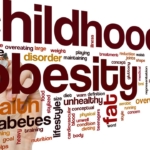
24 Oct 1 in 4 Baby Foods Fail to Meet WHO Nutrition Guidelines
Ready-made foods for infants and toddlers bought in pouches and boxes in Australian supermarkets fall dismally short of nutrient, labelling and marketing requirements set out by the World Health Organization (WHO)
High Sugar and Misleading Claims Raise Concerns
A new study from Monash University reveals that 77% of supermarket foods marketed for infants and toddlers fall short of the World Health Organization’s (WHO) nutrient content standards. Alarmingly, 43% of these products exceed recommended sugar limits, raising concerns about their suitability for young children.
Hidden Risks of Commercial Baby Foods
Commercial baby foods have become a regular part of Australian households, with half of children under five consuming these products at least once a week. The study, published in Public Health Nutrition, found that none of the 45 items assessed met WHO labelling or marketing guidelines. Many products use unregulated terms like “natural,” “organic,” and “no nasties,” which can mislead parents into thinking they are healthier than they actually are.
Current Regulations Leave Gaps in Protection
While the Australia New Zealand Food Standards Code regulates some aspects of infant foods—such as sugar, sodium, and iron content—many health-related marketing claims remain unregulated. According to lead researcher Dr. Alexandra Chung, these gaps in regulation allow manufacturers to shape children’s diets through misleading promotion.
A Call for Stricter Government Regulations
With the Australian Government recently consulting on improving commercial foods for young children, Dr. Chung believes this is an opportunity to introduce stricter guidelines. Mandatory regulations could improve product composition, ensure transparent labelling, and prevent misleading marketing—ultimately protecting the health of Australia’s youngest children.
Key Takeaways for Parents:
- Only 23% of baby foods meet WHO nutrient guidelines.
- 43% of products exceed the recommended sugar content.
Labels often use unregulated terms, making it hard for parents to identify truly nutritious foods.
This articles featured image is for illustrative purposes only and not an example of non-nutritious baby food brand.




